Tempranillo in recent decades has become a popular grape in warm climates like its native home of Spain. Worldwide its combination of vibrant red fruit and neutral profile that allows for good integration of oak aging has propelled it to the fourth most planted variety on earth, with plantings rising still. While still very much under the radar in California, the grape is increasingly showing up as a varietal wine in warmer regions such as the east side of Paso Robles and the Temecula Valley where high diurnal temperature swings and an arid climate bear striking similarities to Central Spain.
With these parallels providing a sort of talking point, “The CRUSH” decided to organize a blind tasting of wines in a sort of showdown fashion. Three Temecula Valley Tempranillos were grouped together with four Spanish Tempranillos in a blind format. All wines were assigned a random number and decanted for 30 minutes prior to the tasting.
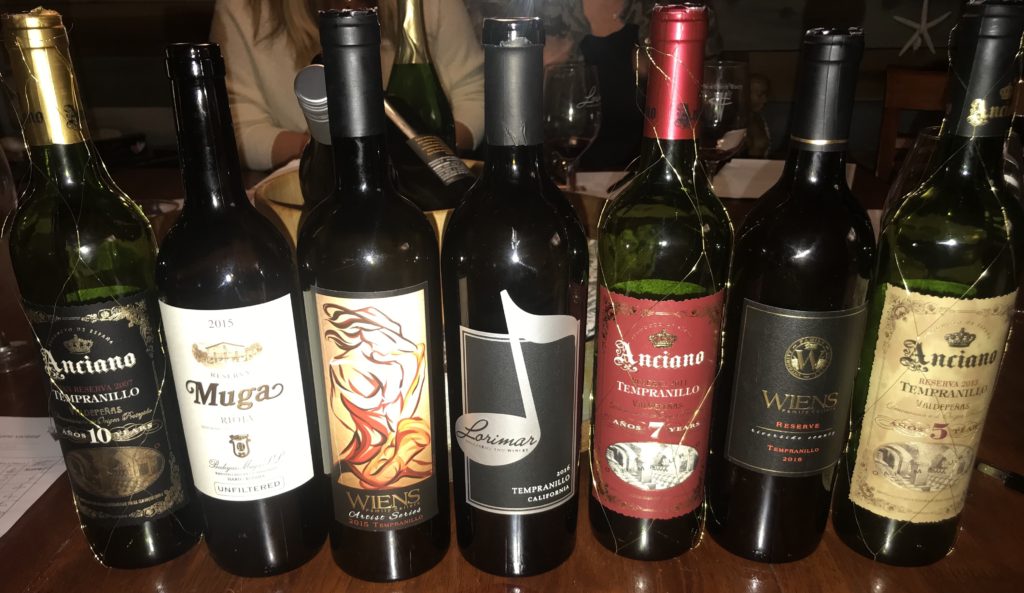
Representing the Temecula Valley were:
- Lorimar 2016 Tempranillo
- Wiens Family Cellars 2015 Tempranillo
- Wiens Family Cellars 2016 Reserve Tempranillo
From Spain:
- Muga 2015 Rioja Reserva
- Anciano 5 Year Valdepeñas Gran Reserva
- Anciano 7 Year Valdepeñas Gran Reserva
- Anciano 10 Year Valdepeñas Gran Reserva
Sixteen guests attended this event. Each guest had varying levels of wine knowledge. All in attendance were given a scoring sheet. For each wine, our guests were instructed to assign a numerical value of 1-5 (1 being least and 5 being best) for characteristics such as Appearance, Aroma, Body, Taste, and Finish. Scores were tallied from each guest and combined after finishing all seven wines.
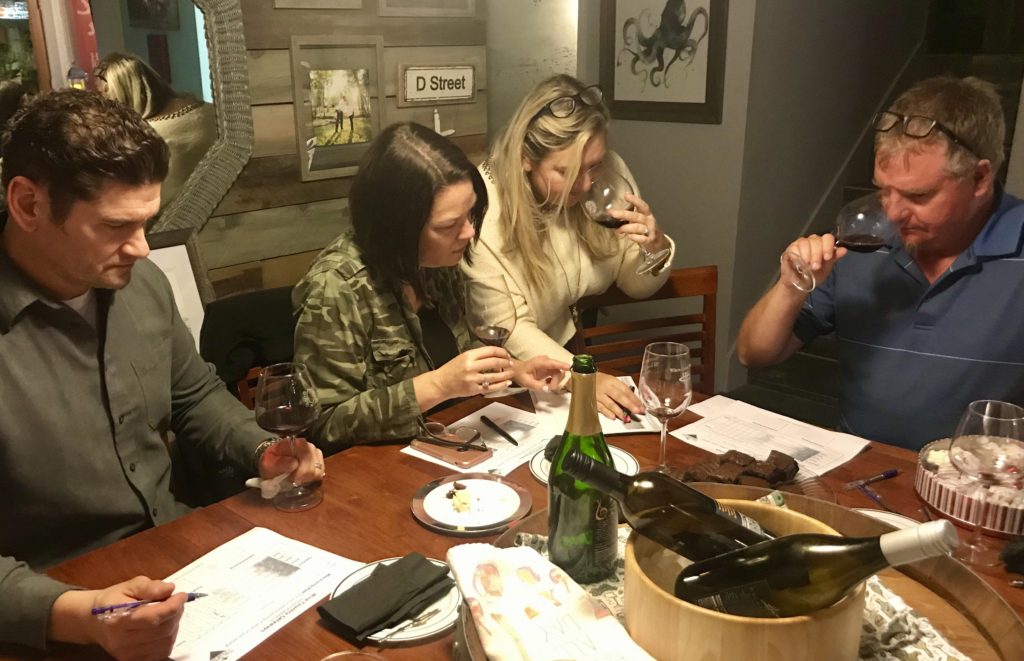
The following commentary will describe each wine in the order of serving.
The first wine smelled and tasted tired. There were some tannins but almost no fruit except for hints of cherry. At first we thought that the wine was tight but a revisit of it later in the evening would prove that our initial observations were correct and that it most likely had been aged too long.
The second wine was incredibly reductive smelling at first. Many did write their scores based on these initial observations. As a result this ended up ranking as the least favorite of the night among the group. By the time the third wine came around for tasting, the second wine did end up yielding a bit more in terms of cherry, cedar, and graphite. After the tasting, comments did emerge on a possible longer decant period for this wine.
The third wine of the evening would later be the groups cumulative scoring winner. It poured a deep ruby in color, with medium flavors and aromas of blackberry, black cherry, coffee, chocolate, cedar, clove, and raspberry. The finish was very lengthy and even though it was drinking well now, the freshness of the fruit indicated that it could have sat longer if desired.
A similar taste profile emerged from the fourth wine. Notes of cherry, blackberry, but followed by a streak of vanilla likely from contact with oak. A deep ruby color was also present. Comparisons at this point started to center around the the third wine and this one as contenders for the top wines of the tasting.
A drastically different wine presented itself for the fifth. The intensity of the nose was light with simple aromas of red cherry, cranberry, and a hint of mint. Flavors were the same. In fact, for the last wines of the evening the common theme was a loss of complexity. Though that alone didn’t cause some of these wines to score poorly as some did have great balance.
The sixth wine in particular had such balance. A medium (-) ruby color, this wine had a basic array of aromas—mostly red cherry and vanilla. However, there was a marked intensity when tasting it. Very pronounced flavors of cherries, vanilla, and even dark chocolate.
The final wine reminded us of the sixth but perhaps with a bit more intense aroma that made the experience of it all the more enjoyable.
Shortly after we tallied our scores and combined them for the final results. At this point, the identity of the wines were revealed to us.
Order of Tasting
- Anciano 10 Year Valdepeñas Gran Reserva
- Muga 2015 Rioja Reserva
- Wiens Family Cellars 2015 Tempranillo
- Lorimar 2016 Tempranillo
- Anciano 7 Year Valdepeñas Gran Reserva
- Wiens Family Cellars 2016 Reserve Tempranillo
- Anciano 5 Year Valdepeñas Gran Reserva
Rankings
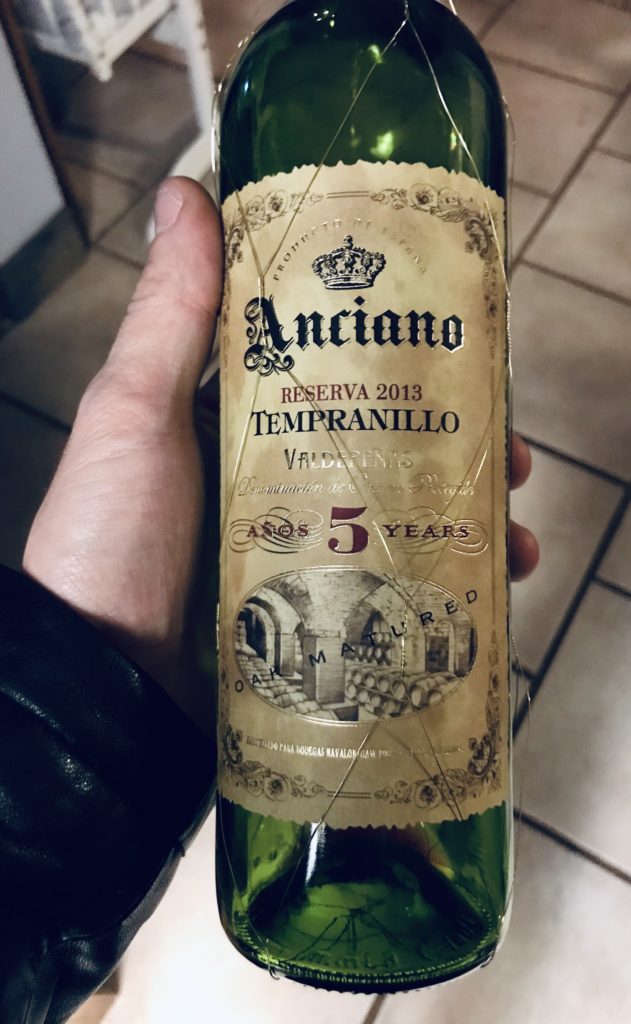
“3rd Place” Anciano 5 Year Gran Reserva 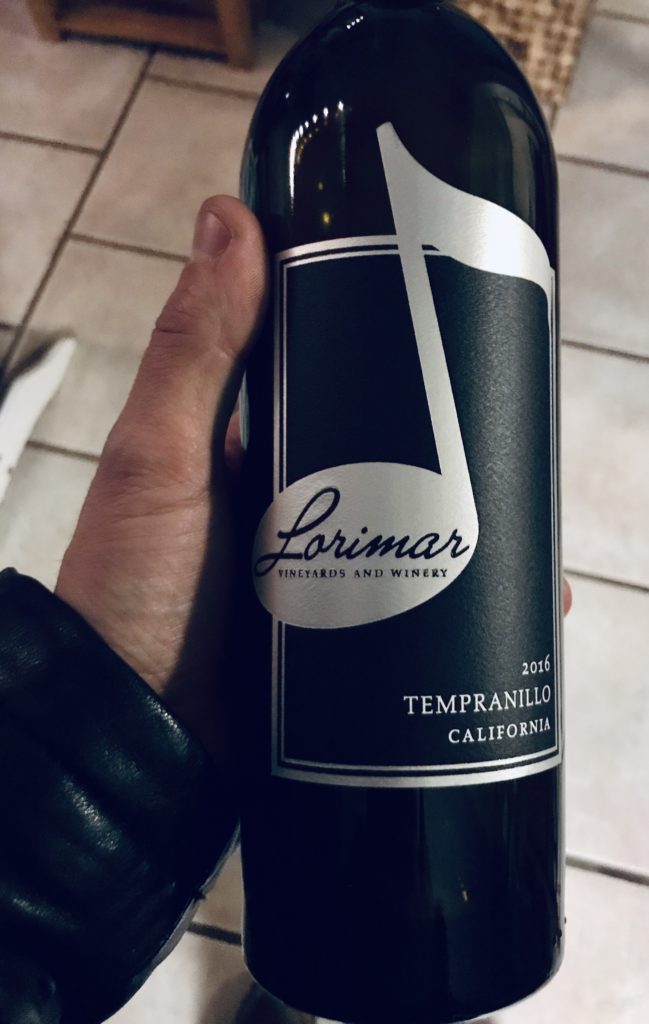
“Runner Up” Lorimar 2016 Tempranillo 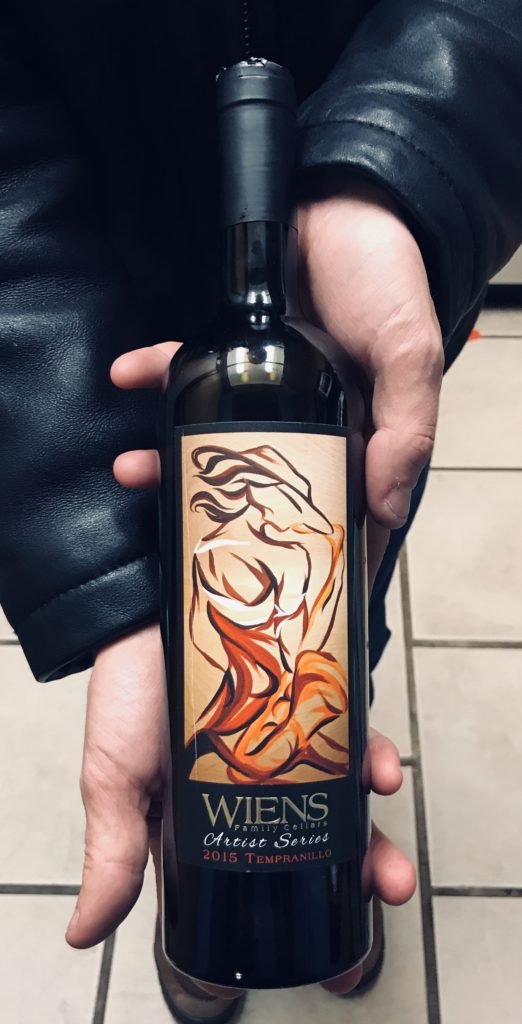
“The Winner”: Wiens Family Cellars 2015 Tempranillo
- Wiens Family Cellars 2015 Tempranillo
- Lorimar 2016 Tempranillo
- Anciano 5 Year Valdepeñas Gran Reserva
- Wiens Family Cellars 2016 Reserve Tempranillo
- Anciano 7 Year Valdepeñas Gran Reserva
- Anciano 10 Year Valdepeñas Gran Reserva
- Muga 2015 Rioja Reserva
Mind you, we are just a group of wine enthusiasts that get together every month or so to enjoy some amazing wine. We usually rotate the person that hosts the event. In each case, the host picks the wine varietal and adjusts the price point. The wine can be from anywhere in the world as long as it meets the hosts criteria.
More than half the time, Temecula Valley wine wins over Napa, Sonoma, and Paso Robles when these tastings are conducted. This Tempranillo tasting seems to have Temecula over Spain this time around!
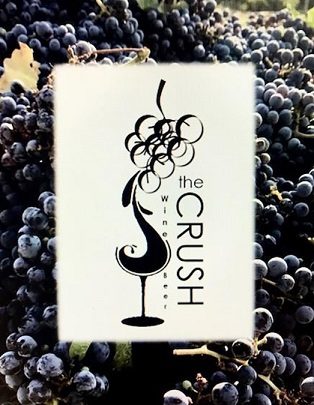

Recent Comments